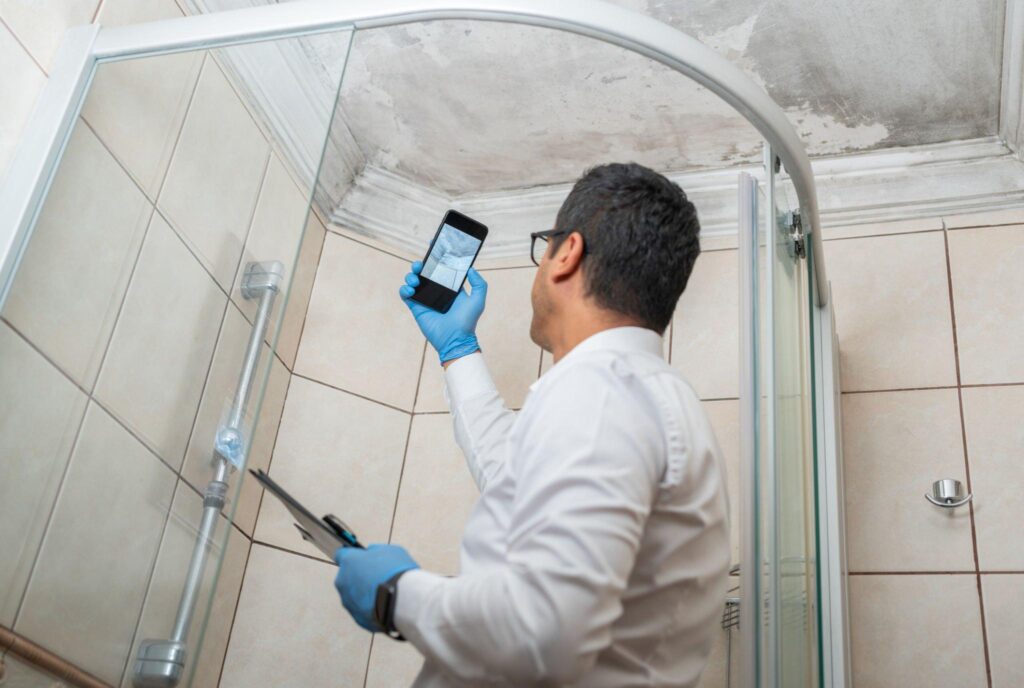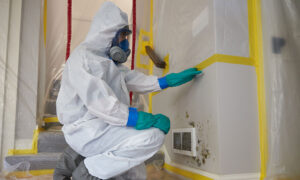Mold is a common household problem that can cause serious health issues if left untreated. However, identifying and addressing mold can be a challenging task, especially if you are not familiar with the signs of mold growth. This is where mold inspection comes in. A mold inspection is an important step in the remediation process, as it allows professionals to identify the type and extent of mold growth in your home or building. In this blog post, we will discuss the role of mold inspection in the remediation process, including what to expect during an inspection and how it can help ensure that your mold problem is properly addressed.
Introduction
Mold is a common problem that can cause serious health issues if left untreated. It is important to identify and address mold growth as soon as possible, but this can be challenging for homeowners who are not familiar with the signs of mold. This is where mold inspection comes in. A mold inspection is an important step in the remediation process, as it allows professionals to identify the type and extent of mold growth in your home or building. This blog post will discuss the role of mold inspection in the remediation process, including what to expect during an inspection and how it can help ensure that your mold problem is properly addressed.
The Mold Inspection Process
I. Identifying Potential Mold Growth Areas
- Visually inspect the property for signs of mold growth
- Utilizing moisture meters and other equipment to detect hidden mold
- Considering factors such as past water damage, high humidity, and poor ventilation
II. Collecting Samples for Testing
- Taking both air and surface samples to determine the presence and type of mold
- Using proper sampling techniques to ensure accuracy
- Sending samples to a laboratory for analysis
III. Evaluation of Test Results
- Interpreting the results of the lab analysis
- Identifying the type of mold present and the extent of growth
- Providing a report outlining the findings and recommendations for remediation.

The Remediation Process
I. Identifying the Type of Mold Present
- Using the results of the mold testing to determine the type(s) of mold present
- Understanding the unique characteristics and potential health effects of each type of mold
- Considering factors such as the size of the affected area and the type of building materials present
II. Developing a Plan for Removal and Cleaning
- Developing a detailed plan for the removal and cleaning of the mold, taking into account the type of mold, the extent of the growth, and the location of the mold.
- Using appropriate personal protective equipment (PPE) and containment measures to prevent the spread of mold spores during the cleaning process
- Identifying and addressing the underlying cause of mold growth to prevent future outbreaks
III. Implementing the Plan
- Removing moldy materials and cleaning affected surfaces using appropriate cleaning solutions and techniques
- Disposing of contaminated materials in accordance with local regulations
- Conducting necessary repairs or renovations to prevent future mold growth
IV. Verifying the Effectiveness of the Remediation
- Performing post-remediation testing to ensure that all mold has been removed and that the area is safe to occupy
- Providing a clearance report to the property owner or manager, verifying that the mold has been successfully remediated
- Offering advice and guidance to help prevent future mold growth.
The Role of the Mold Inspector in the Remediation Process
I. Providing Guidance on the Inspection and Testing Process
- Advising property owners and managers on the appropriate steps to take when suspecting mold growth
- Explaining the mold inspection and testing process, including the collection of samples and the evaluation of results
- Recommending qualified professionals to perform the inspection and testing, if needed
II. Interpreting Test Results and Recommending Appropriate Remediation Actions
- Reviewing and interpreting the results of the mold testing
- Identifying the type(s) of mold present and the extent of the growth
- Recommending appropriate remediation actions based on the test results and an assessment of the building and its contents
III. Monitoring the Progress of the Remediation
- Inspecting the affected areas before, during, and after the remediation process
- Verifying that the remediation is being done according to industry standards and guidelines
- Ensuring that the appropriate personal protective equipment and containment measures are being used
- Confirming that the underlying cause of the mold growth is addressed and that steps are taken to prevent future mold growth.
Conclusion
In conclusion, mold inspection plays a critical role in identifying and addressing potential mold growth within a property. The inspection process, which includes identifying potential mold growth areas, collecting samples for testing and evaluating the test results, provides a comprehensive understanding of the mold infestation and guides the remediation process.
The remediation process, which includes identifying the type of mold present, developing a plan for removal and cleaning, implementing the plan and verifying the effectiveness of the remediation, is essential in addressing mold infestations and ensuring the safety of the occupants.













































